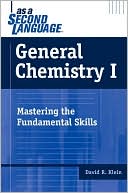Category Books
- Fiction Books & Literature
- Graphic Novels
- Horror
- Mystery & Crime
- Poetry
- Romance Books
- Science Fiction & Fantasy
- Thrillers
- Westerns
- Ages 0-2
- Ages 3-5
- Ages 6-8
- Ages 9-12
- Teens
- Children's Books
- African Americans
- Antiques & Collectibles
- Art, Architecture & Photography
- Bibles & Bible Studies
- Biography
- Business Books
- Christianity
- Computer Books & Technology Books
- Cookbooks, Food & Wine
- Crafts & Hobbies Books
- Education & Teaching
- Engineering
- Entertainment
- Foreign Languages
- Game Books
- Gay & Lesbian
- Health Books, Diet & Fitness Books
- History
- Home & Garden
- Humor Books
- Judaism & Judaica
- Law
- Medical Books
- New Age & Spirituality
- Nonfiction
- Parenting & Family
- Pets
- Philosophy
- Political Books & Current Events Books
- Psychology & Psychotherapy
- Reference
- Religion Books
- Science & Nature
- Self Improvement
- Sex & Relationships
- Social Sciences
- Sports & Adventure
- Study Guides & Test Prep
- Travel
- True Crime
- Weddings
- Women's Studies
General Chemistry as a Second Language » (1st Edition)

Authors: David R. Klein
ISBN-13: 9780471716624, ISBN-10: 0471716626
Format: Paperback
Publisher: Wiley, John & Sons, Incorporated
Date Published: March 2005
Edition: 1st Edition
Author Biography: David R. Klein
David Klein is a lecturer at Johns Hopkins University where he teaches Organic and General Chemistry. He is a dynamic and creative teacher and uses analogy to help students grasp difficult topics. Klein’s unique informal voice and manner of presentation help students truly master key topics in this course. He is also the author of Organic Chemistry as a Second Language; response to this book has been phenomenal.
Book Synopsis
Get a better grade in General Chemistry
Even though General Chemistry may be challenging at times; with hard work and the right study tools, you can still get the grade you want. With David Klein’s General Chemistry as a Second Language, you’ll be able to better understand fundamental principles of chemistry, solve problems, and focus on what you need to know to succeed.
Here’s how you can get a better grade in General Chemistry:
Understand the basic concepts
General Chemistry as a Second Language focuses on selected topics in General Chemistry to give you a solid foundation. By understanding these principles, you’ll have a coherent framework that will help you better understand your course.
Study more efficiently and effectively
General Chemistry as a Second Language provides time-saving study tips and problem-solving strategies that will help you succeed in the course.
Improve your problem-solving skills
General Chemistry as a Second Language will help you develop the skills you need to solve a variety of problem types––even unfamiliar ones!
Table of Contents
Chapter 1. Numbers and Units.
Chapter 2. Counting Atoms and Molecules.
Chapter 3. Balancing Reactions and Stoichiometry.
Chapter 4. The Ideal Gas Law.
Chapter 5. Energy and Enthalpy.
Chapter 6. Orbitals, Bonds, and Counting Electrons.
Chapter 7. Drawing Lewis Structures.
Chapter 8. Molecular Geometry and Hybridization States.
Chapter 9. Exponents and Logarithms.
Appendix.
Answers.
Index.
Subjects
 Teaching & Teacher Training
Teaching & Teacher Training  Teaching - Science & Technology
Teaching - Science & TechnologyScience & Nature
 Chemistry
Chemistry  Chemistry - General & Miscellaneous
Chemistry - General & MiscellaneousScience & Nature
 Reference & Textbooks
Reference & Textbooks  Study & Teaching of Science
Study & Teaching of ScienceScience & Nature
 All Science & Nature
All Science & Nature  Chemistry - General and miscellaneous
Chemistry - General and miscellaneousScience & Nature
 All Science & Nature
All Science & Nature  Science Reference
Science ReferenceNonfiction
 Science & Nature
Science & Nature  Chemistry
ChemistryNonfiction
 Science & Nature
Science & Nature  Reference & Textbooks
Reference & TextbooksNonfiction
 Science & Nature
Science & Nature  All Science & Nature
All Science & Nature
